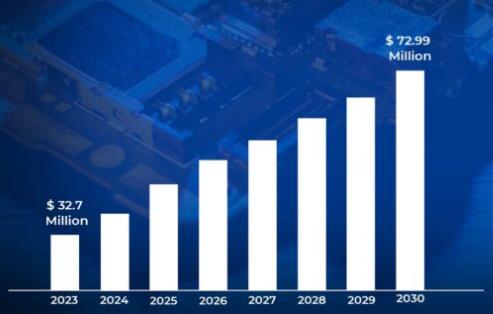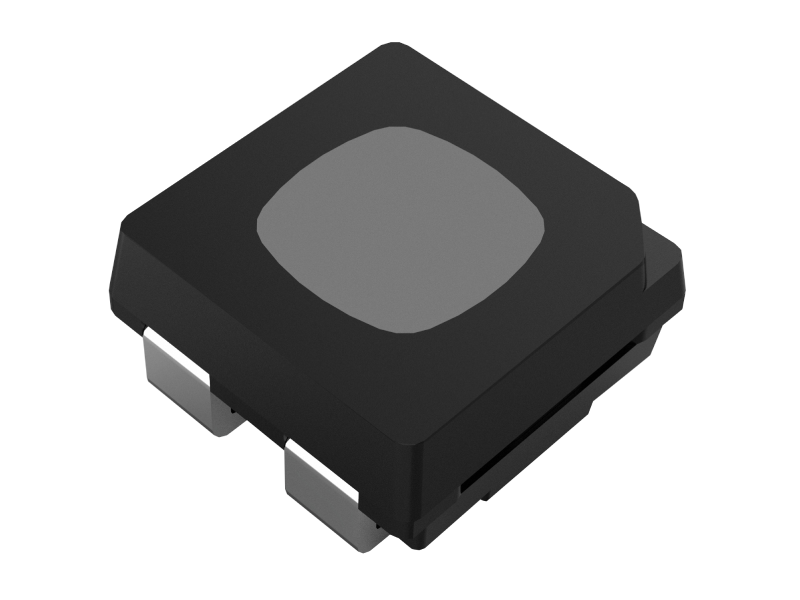According to the research data and industry analysis information of the authoritative research organization VMR, the global LED packaging market size was US$3.27 billion in 2023, and is expected to reach US$72.99 billion by 2030, with a compound annual growth rate (CAGR) of up to 12.3% during the forecast period of 2024-2030. From the forecast data, it is not difficult to find that the research organization is extremely optimistic about the global LED packaging market, and LED packaging has a good development space. So, from the current market situation, what specific factors are driving the development of the LED packaging market? Are there any factors that will have a certain restrictive effect on the development of LED packaging? Let’s take a look below.

Global LED Packaging Market Size and Forecast (source: VMR ie Verified Market Research)
Judging from the current market conditions, what specific factors are driving the development of the LED packaging market?
Energy Efficiency:
LED lighting offers significant energy savings compared to more traditional lighting technologies such as incandescent and fluorescent lamps. The LED packaging market is driven by the increased demand for LED lighting products as governments and businesses place greater emphasis on sustainability and energy efficiency.
Technology Advancement:
With the continuous advancement of LED packaging technology, the efficiency, brightness, color rendering and service life of LED products have been enhanced. LEDs are becoming more and more popular in a wide range of applications, including consumer electronics, commercial, industrial, automotive and residential.
Environmental Protection:
The use of energy-efficient lighting technologies, such as LEDs, is driven by growing environmental awareness and government actions aimed at reducing carbon emissions. Compared to traditional lighting solutions, LEDs consume less energy and contain fewer harmful elements, making them an ideal choice for businesses and customers who care about the environment.
Decreased Cost:
As production technology improves and economies of scale are achieved, the cost of LED lighting products continues to decline. This cost reduction encourages the use of LED lighting in various fields and makes it more affordable to a wider range of consumers.
Government Incentives:
Many governments around the world have provided corresponding incentives to promote the development of LED energy-saving technology, thereby promoting the development of the LED lighting and LED display markets.
Accelerated urbanization:
Many countries around the world are promoting urbanization, and small and medium-sized cities are developing rapidly. The demand for corresponding infrastructure is also increasing, and the demand for LED energy-saving technology, namely LED lighting and LED screens, is also growing.
Smart Lighting and IoT Integration:
By combining LEDs with Internet of Things (IoT) technology and smart lighting systems, advanced lighting control, energy management and customization can be achieved. As smart lighting solutions are widely used in companies, residences and public areas, the demand for LED packaging is also increasing.
The automotive industry turns to LED lighting:
The automotive industry’s shift to LED lighting, which is used in car headlights, taillights, interior lighting, etc., is also an important factor driving the continued development of LED packaging. In terms of automotive lighting, LEDs provide better visibility, energy efficiency and design flexibility than traditional technologies.
The demand for LED display applications is growing rapidly:
LEDs are widely used in various display applications, including TVs, smartphones, digital signage, and automotive displays, due to their high brightness, color accuracy, and energy efficiency. The growing demand for high-end displays is a factor driving the growth of the LED packaging market.

Kinglight provides various LEDs for screen manufacturing
So, what factors will make a certain restriction on the expansion of the LED packaging market?
High initial investment:
The LED packaging process requires significant upfront investment in technology and equipment, which can discourage smaller and new competitors from joining the market.
Technical complexity:
Chip attachment, wire bonding, packaging, testing, and other complex procedures are all part of LED packaging. It can be difficult for manufacturers to keep up with the rapidly evolving technology while maintaining high-quality packaging procedures.
Thermal management:
LEDs are heat-sensitive components and therefore require effective thermal management technology to ensure their stability and service life, which to some extent increases the complexity and cost of LED packaging.
High raw material cost:
The prices of raw materials for LED packaging, such as substrates, encapsulants and phosphors, are relatively expensive, which has a great impact on the manufacturing costs and profit margins of LED packaging companies.
Regulatory Compliance:
The laws of some countries or regions have high requirements for product safety, environmental sustainability and energy efficiency of LED packaging, which will increase the complexity and cost of LED device manufacturing and also restrict the development of LED packaging to a certain extent.
Other technology competition:
LED technology faces competition from OLED, fluorescent and incandescent lighting technologies. Although LED has relative advantages in lifespan and energy efficiency, other technologies also have their own advantages, which also limits the expansion of the LED packaging market.
Global Recession:
The potential or ongoing global economic recession also has a significant impact on the development of the LED packaging market.
Global supply chain disruptions:
Natural disasters, geopolitical turmoil or epidemics (such as COVID-19) have had a certain impact on the global supply chain of LED packaging, affecting the flow of components and raw materials, and having a certain negative impact on the development of LED packaging.
Lack of standardization:
At present, the LED packaging component testing procedures and technical specifications are not standardized enough, and there are incompatibilities between products from different manufacturers, which has also hindered the expansion of the LED packaging market to a certain extent.
Although the advantages of LED lighting have been widely recognized, some consumers or other end users (such as companies) still do not fully understand the advantages of LED lighting. This has also restricted the popularity of LED lighting applications to a certain extent, thus affecting the further expansion of the LED packaging market.